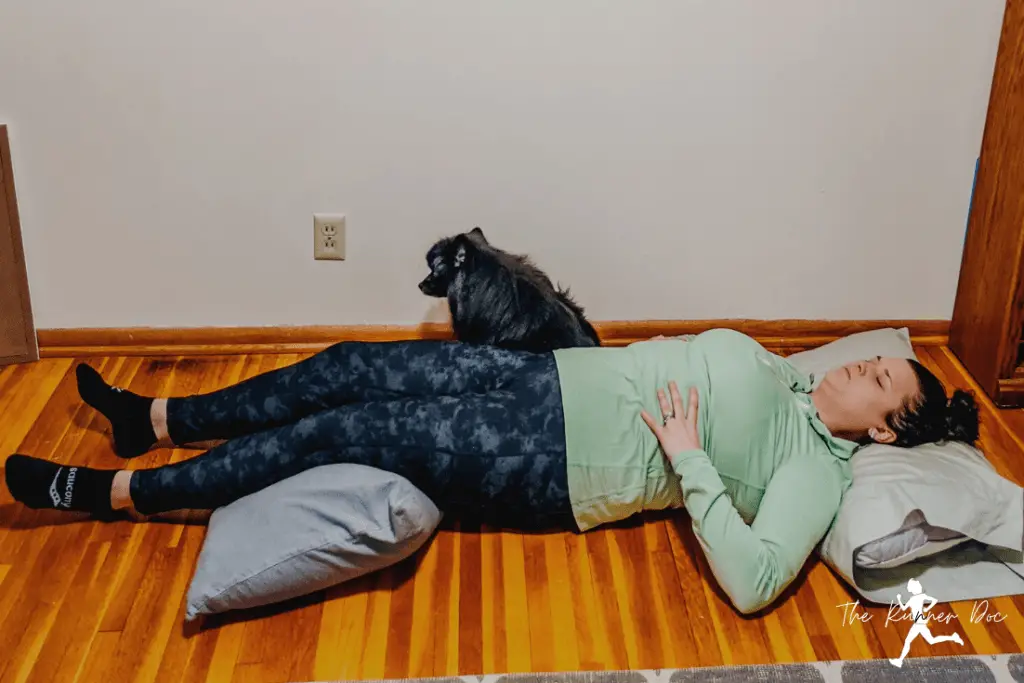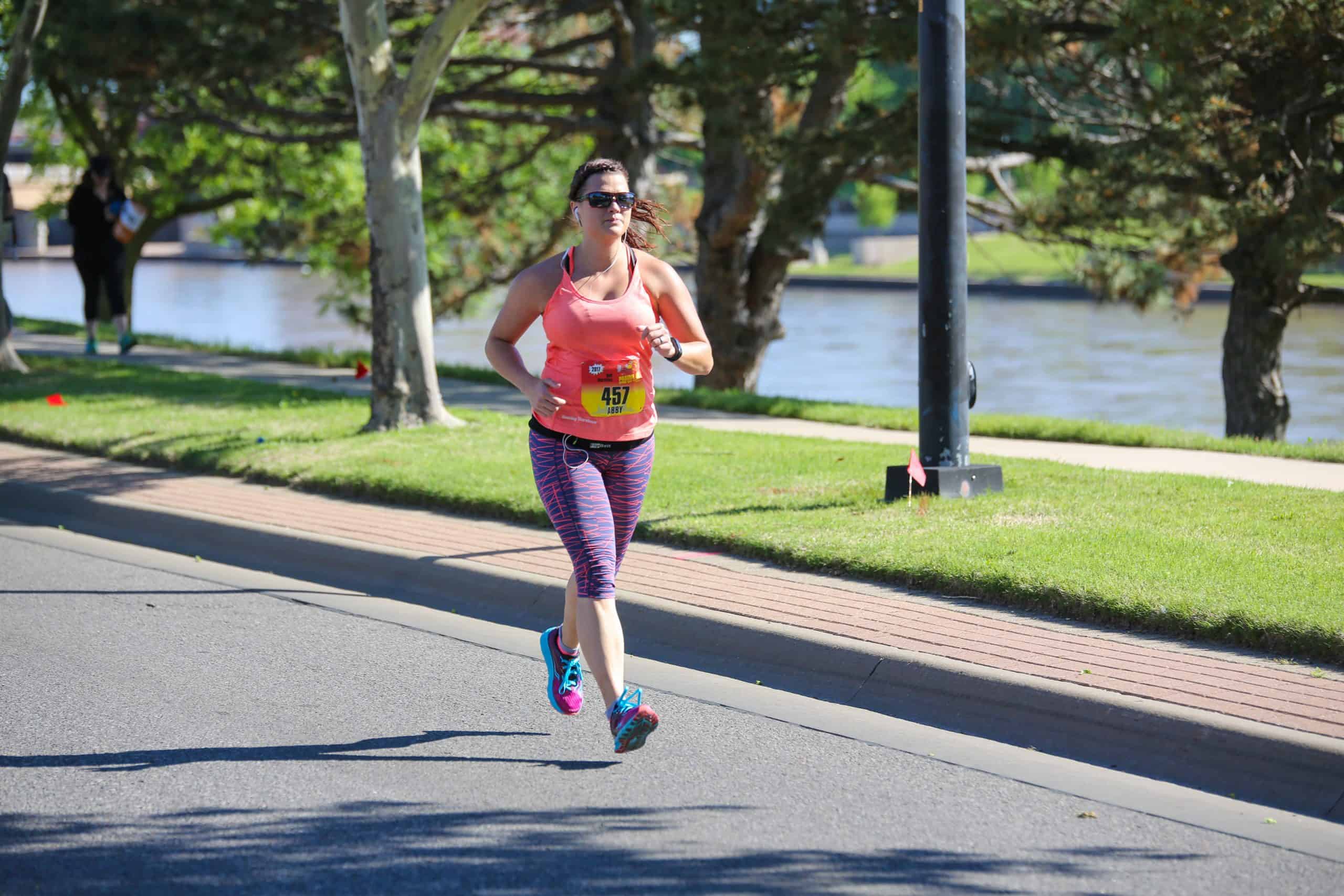How to Breathe When Running – Diaphragmatic Breathing
I have been an asthmatic all my life. Because of this, I didn’t get to play soccer as a child because my parents didn’t think I’d be able to breathe with all the grass and running. (yes I’m allergic to grass and it would cause asthma attacks.) Never in a million years did I think I would become a half marathoner or even a runner later in life. At least not until I learned how to breathe when running.
For years I thought that running just couldn’t be my thing due to my asthma. I played sports. Softball was my jam but I also played basketball and was fairly good at it. So how did I get into running being an asthmatic? I learned how to breathe when running.
Why Learning How to Breathe When Running is Important
If diaphragmatic breathing makes your body maximize the amount of oxygen your bloodstream is getting, then you are going to be able to run longer. Not only will you be able to run longer, but you will also prevent side stitches. Because of my history of asthma, I was on a mission to learn how to breathe. Not just for running but so I didn’t need to rely on an inhaler (I’m not promoting this and always have my emergency inhaler with me) when I had an attack. I wanted to learn how to breathe through things. Learning how to breathe when running was and has been a key for my continued enjoyment of the sport.
I know as a beginner it feels like your lungs are burning when you are out running. What if from the start we re-train our bodies how to breathe correctly and support our efforts with running better. I think this is something that is frequently overlooked in guides and tips for beginner runners or even runners of all levels!
What is Diaphragmatic Breathing?
To start, I want you to take a deep breath. What happed? Did your chest expand and your shoulders go up towards your ears? OR did your belly expand? If you said belly then you are on the right track. If your shoulders went to your ears you need some work! Honestly though. Both scenarios benefit from diaphragmatic breathing work.
So what is it? Our diaphragm, which is the most important muscle when it comes to respiration, is dome-shaped and rests just beneath our rib cage. It is the muscle that separates our chest from our abdomen.
So Diaphragmatic breathing is contracting your diaphragm to take a nice deep breath. Taking a breath using your diaphragm involves letting your lower ribs expand instead of your chest. When you do this, it allows your lungs the most space to expand. This, in turn, maximizes the amount of oxygen we take into our blood stream with each breath.
The Basics of Diaphragmatic Breathing
Breathing from the diaphragm is a 360 movement. What this means is that the rib cage and your whole torso are going to expand in all directions, you’ll even have some chest movement. you want to focus on dropping the shoulders and starting your breath from the diaphragm.
Things you’ll need for exercising your diaphragm
- a flat pillow or folded towel for under the head
- a pillow to place under your knees
- a quiet and relaxing place that you feel safe and comfortable in
Diaphragmatic Exercises
Assume a laying down position using the above items to get nice and comfortable. You want to have a straight line that is relaxed from your neck to your hips. Also, make sure your back isn’t arching up off of the floor. If it is and you have a pillow under your knees try either a larger pillow or place your feet on a chair with your knees bent to 90 degrees.
Exercise #1
Start with placing a hand on your stomach and the other on your chest. This first exercise is just becoming aware of how we are breathing and focusing on relaxing. Are both hands moving equally and together or is one moving more than the other. Adjust your position to find a good balance so both your hands are moving at the same time.
While you are adjusting and observing you want to take slow breathes in through your nose and breathe out as if you are blowing up a balloon nice and slow. Slow and controlled is the goal with these breaths. Once you feel relaxed and equal in your hands it is time to move on to the next exercise.

Exercise #2
The next area we want to focus on is our sides. Those pesky sides that get the stitches we all dread. Placing your hands on your lower ribs on either side of you take a relaxed breath in through your nose and feel your ribs expand into your hands. Then, softly exhale while your ribs contract back in.

Exercise #3 – How to Breathe When Running
While you are running focus on inhaling through your mouth and nose for three steps and then exhaling for the next two steps. Focus on expanding your belly/chest/ribs as you did in the previous two exercises here as well.
Benefits of Learning How to Breathe When Running
Daily practice of diaphragmatic breathing has so many benefits if you do it for only 5 minute a day or during your running (or both) you can see some of these almost immediately.
- improved running stamina
- increased joint ROM
- increased soft tissue ROM
- promoting better sleep and preventing insomnia – helps runners recover!
- controlling oxidative stress in type 2 diabetics
- lowered cortisol levels (stress hormone) and improving mood
- lowering/stabilizing of blood pressure
- improved pulmonary function in asthmatics (ME!!)
- decreasing side stitches during running
- a reduction in pain
Not Natural
You may be wondering why we don’t naturally breathe like this if it is so good for us. Well, we used to and it SHOULD be natural. However, one of the reasons that it feels unnatural to us according to an article by Harvard is due to body image. In our culture, we have focused on how attractive a flat stomach is which causes us to hold in our stomach muscles. This naturally interferes with deep breathing and makes chest breathing seem more normal.
How to Breathe When Running – You Try it
Next time you are warming up for a run take 5 minutes to practice your technique and then focus for part of your easy run on your breathing! You will notice increased focus and hopefully increased performance as well with getting all that good oxygen to your muscles.
Keep Running!
AFFILIATE DISCLOSURE
As an Amazon Associate, I earn from qualifying purchases. This post may contain affiliate links. If you use these links to buy something we may earn a commission. The Site may contain links to affiliate websites, and we receive an affiliate commission for any purchases made by you on the affiliate website using such links.


Dr. Abby Siler, PT, DPT is a Physical Therapist with 10 years of experience in a variety of settings. She has spent the majority of her time treating athletes in orthopedic clinics and worker’s compensation cases. She is a runner herself for the past 15 years and a lifelong athlete. Dr. Abby loves to teach runners how to stay injury free and out of her clinic.









Oh, I’m going to have to try those exercises to make sure I’m getting the most out of every breath.
It can make such a difference!! Plus they are extremely relaxing to do!!
Lots of great information here! I’ve never tried breathing exercises before.
Thanks for linking up!
Glad to join in!!
So true!! I tell all my patients that have any upper body issues that we live in a forward facing world causing the chest area to get stuck as you said!!
These are great. I have struggled with breathing during runs since my tonsillectomy, and it’s been hard to get back to a good place. I still get out there, but I could probably be a lot more efficient.
Oh man a tonsillectomy can be rough!! Hope these help!!
Thanks for these tips! I’ve never heard of Diaphragmatic Breathing so these were all interesting to read.
You are welcome! They help so much!